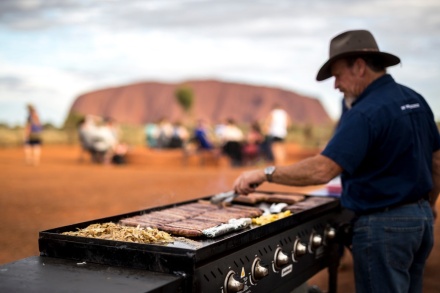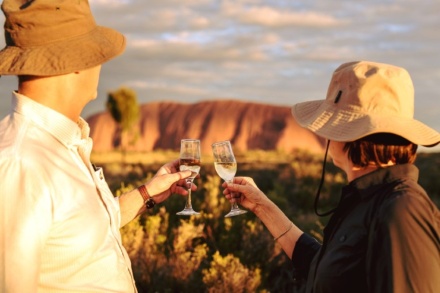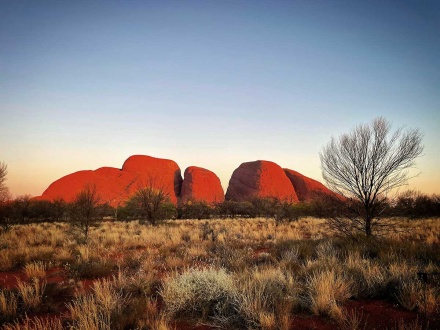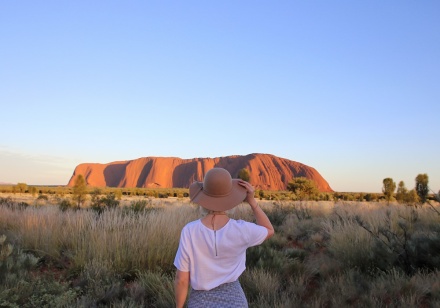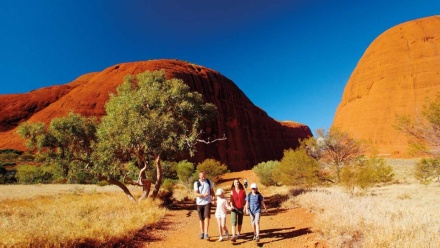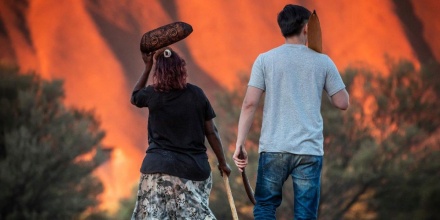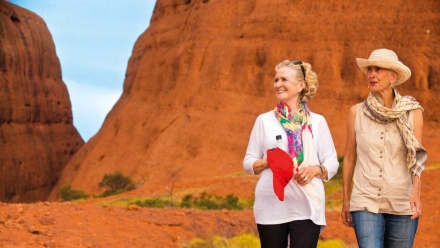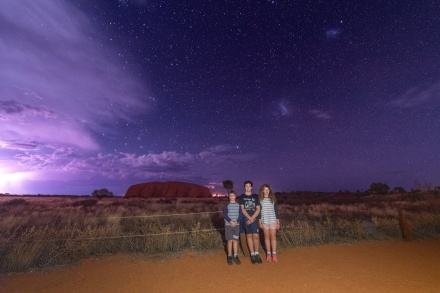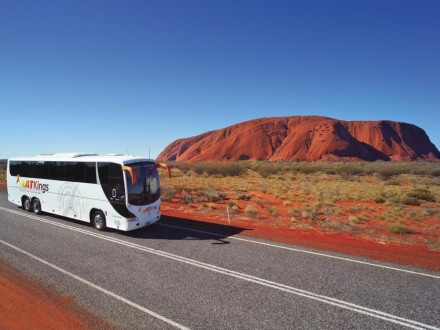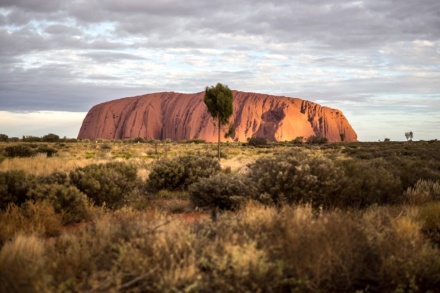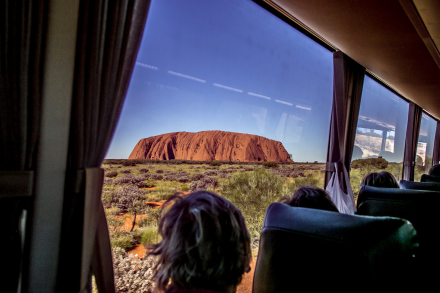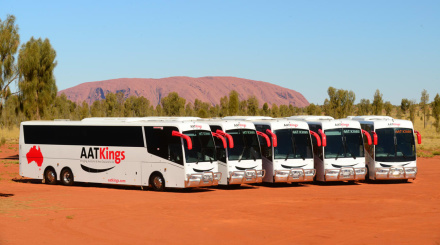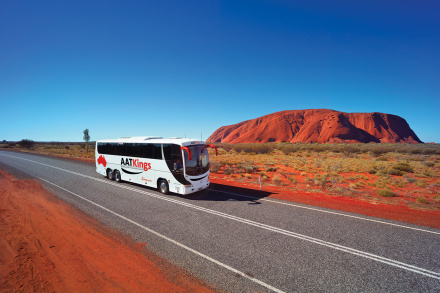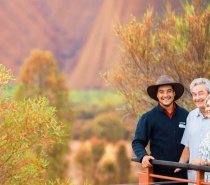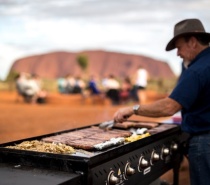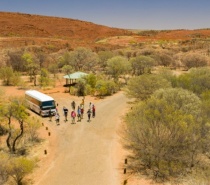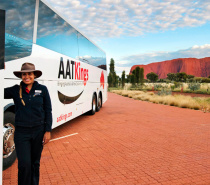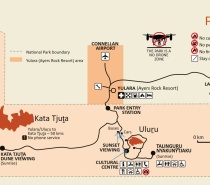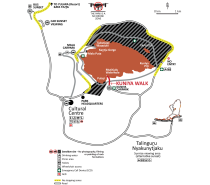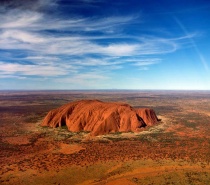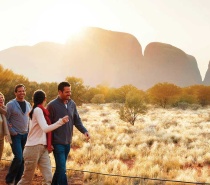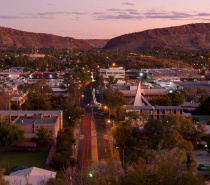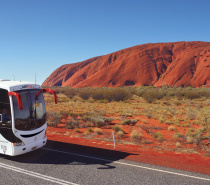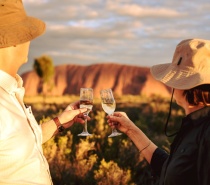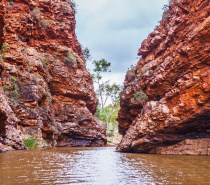About Experience Uluru
Uluru (Ayers Rock)
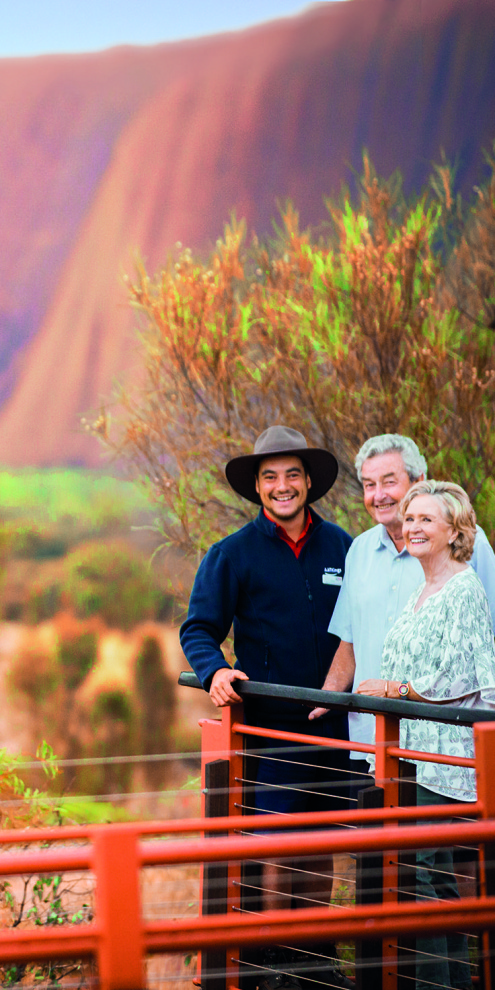
Uluru – Kata Tjuta National Park is home to the world famous Uluru (Ayers Rock), the physical red heart Australia and one of Australia’s most iconic natural landmarks. The monolith stands at a towering 348 metres tall and has a circumference of over 9 kilometres, with the bulk of its mass lying underground.
In 1873, surveyor William Gosse sighted ‘the Rock’ and in honour of the then Chief Secretary of South Australia Sir Henry Ayers, named it Ayers Rock. It wasn’t until 1993 that Uluru became the first icon in Australia to be given back its Aboriginal name and making it the first official dual-named feature in the Northern Territory.
The perfect place to view the sunrise at Uluru and Kata Tjuta is from the Talinguṟu Nyakunytjaku viewing area. Offering uninterrupted 360° views here you can witness the magnificent glow of the sun bring the surrounding desert landscape to life.
After a day of exploring, you can take in the unforgettable experience of an Uluru sunset. Feel the magic of the outback as you sip on a glass of wine and witness the ever changing colours of Uluru. Essentially grey, the oxidation of iron on the surface of the rock gives it a striking orange-red hue and is responsible for creating its radiant glow.
Stop by the Uluru – Kata Tjuta National Park Cultural Centre, the best place to get acquainted with the Anangu country. A wander through the “Tjukurpa Tunnel” will introduce you to the culture of the Anangu people and Aboriginal law (Tjukurpa). Learn about Aboriginal creation stories, ancestral beings, admire local art and discover the significance of the several walks available around the area.
For safety reasons the local Anangu request that visitors do not climb Uluru. Although not prohibited, it’s recommended that travellers respect their wishes while on Anangu land. There are several other ways to experience the sacred beauty of this ancient monolith such as on the insightful walks around its base or a scenic helicopter flight over the top.
Discover this intriguing World Heritage Listed wonder as you follow in the footsteps of the land’s ancestral beings absorbing the stories sacred to the Anangu community. The natural beauty and rich culture of Uluru will be revealed as you explore the base by foot on the famed base walk, home to waterholes, unique desert flora, caves and ancient rock paintings.
The Kuniya Base Walk is an insightful track that leads to Muṯitjulu waterhole, home of a wanampi, an ancestral watersnake. You’ll gain a unique insight into the sheer physical and spiritual enormity of Uluru and pass ancient cave paintings and other sites significant to the local Anangu and the early explorers.
The Mala Walk leads you past several areas of rock art and sacred sites where Aboriginal communities live and prepare for ceremony. It’s believed that as you walk through this area, you’ll be surrounded by the spirit of the Mala Tjukurpa – the hare-wallaby people. The walk will take you to the peaceful Kaṉtju Gorge.
However you choose to explore Uluru, you’ll no doubt gain an understanding of the innate spirituality and peacefulness that resounds from this ancient landscape.
Kata Tjuta (The Olgas)
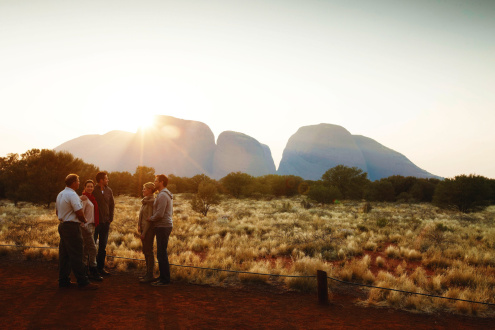
Positioned a 45-minute drive west from the iconic Uluṟu (Ayers Rock) lies the spectacular Kata Tjuta (The Olgas). This geological wonder is one of the two primary attractions within the Uluṟu – Kata Tjuta National Park and is a sight not to be missed.
In contrast to Uluṟu's singular rock formation, Kata Tjuta comprises 36 magnificent domed rocks, collectively referred to as 'many heads' in the indigenous Aṉangu language. These formations, also known as The Olgas, derive their alternate name from their highest point, Mt. Olga. This peak, named in honor of Queen Olga of Württemberg in 1872, ascends to a breathtaking 1066 meters above sea level.
The area has been home to the Aṉangu Aboriginal community for over 22,000 years. Their culture and laws are guided by the Tjukurpa, which encompasses a wealth of knowledge and stories. Many of these narratives associated with Kata Tjuta are sacred and remain exclusive to the community.
The most stunning vantage point to witness the grandeur of Kata Tjuta's 36 domes is from a sand dune lookout. Here, visitors can enjoy a sweeping panorama that includes both Kata Tjuta and Uluṟu in the distance. Like its counterpart Uluṟu, Kata Tjuta offers strategically placed viewing spots that are particularly striking at dawn and dusk.
For those keen to immerse themselves in the majesty of Kata Tjuta, the Walpa Gorge and Valley of the Winds walking trails offer a close-up experience of the towering formations. These two public paths have been carefully selected to protect the delicate desert ecosystem and respect the spiritual practices of the land's traditional owners.
The Walpa Gorge trail meanders between two of the highest domes along a rocky creek, offering a peaceful encounter with the wilderness. The name 'Walpa', meaning whistle in the Aṉangu language, reflects the gentle winds that can be heard here.
For the more adventurous, the Valley of the Winds trail is a challenging yet rewarding journey through multiple domes, presenting awe-inspiring vistas. No matter which path you choose, the resilience of the local flora and fauna in the harsh Australian desert is remarkable, and the unique perspectives of the outback are sure to leave a lasting impression.
Ayers Rock & Uluru
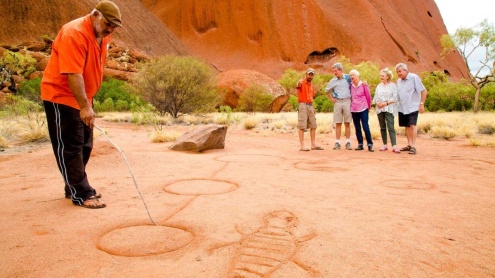
The dual naming of Ayers Rock and Uluru is a reflection of Australia's cultural and historical landscape.
Uluru is the traditional Indigenous Australian name given by the local Aṉangu people, the traditional owners of the land. This name has been used for thousands of years and is deeply rooted in the Indigenous culture and spirituality of the area. Uluru is not just a physical landmark but also holds great spiritual significance for the Aṉangu, being central to many of their creation myths and spiritual beliefs.
Ayers Rock, on the other hand, is the name given by European explorers in the late 19th century. It was named by explorer William Gosse in 1873 after Sir Henry Ayers, who was the Chief Secretary of South Australia at that time. This name represents the period of European exploration and colonization in Australia.
In recent years, there has been a significant shift towards recognizing and respecting Indigenous Australian culture and heritage. This is part of a broader movement of reconciliation between Indigenous and non-Indigenous Australians. In 1993, the official names of many such landmarks, including Ayers Rock/Uluru, were dual-named, acknowledging both their Indigenous and colonial histories. This dual naming is a way of respecting the ancient and continuous connection that Indigenous Australians have with the land, while also recognizing the more recent European history.
For many visitors and Australians alike, using the name Uluru is seen as a sign of respect for Indigenous culture and acknowledgment of their traditional ownership of the land. As a result, you'll often hear the formation referred to as Uluru, especially in contexts emphasizing cultural sensitivity and respect for Indigenous heritage.
Alice Springs
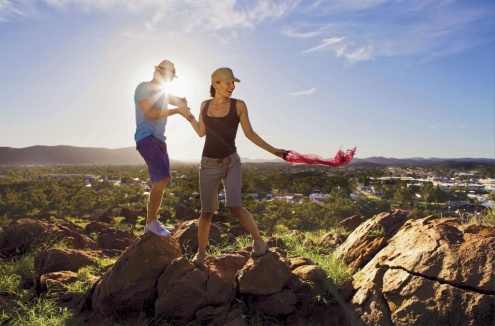
Located just 200 kilometres from the geographical centre of Australia is the outback town of Alice Springs, affectionately known as ‘Alice’.
There’s plenty to see and do in and around this isolated town; visit the home of unique outback community services the Royal Flying Doctor Service and School of the Air, wander through the town centre where you’ll find local Aboriginal art on display and meet friendly locals who’ll share their amazing stories about life in the outback.
The historic Telegraph Station is a must-see on a visit to Alice Springs. Built in 1872 as part of the Overland Telegraph line linking Adelaide to Darwin and Australia to the world, it’s a window into Australia’s pioneering past.
Alice Springs is bordered by the rugged MacDonnell Ranges and has a range of incredible Red Centre experiences right on its doorstep. Follow the Red Centre Way from Alice Springs to the remote Aboriginal community of Hermannsburg and you’ll witness the landscapes that inspired renowned Australian artist Albert Namatjira, who was born in this former German missionary town.
Travel further west through the breathtaking desert terrain of the West MacDonnell Ranges and you’ll discover unique natural wonders like Standley Chasm and Palm Valley, an oasis of palm trees in the rugged surroundings of Finke Gorge National Park.
Alice is also a gateway to some of Australia’s most iconic destinations including Uluru (Ayers Rock), Kata Tjuta (the Olgas) and Kings Canyon and is part of the famous rail journey on The Ghan from Adelaide to Darwin.
Ayers Rock to Alice Springs Transfer
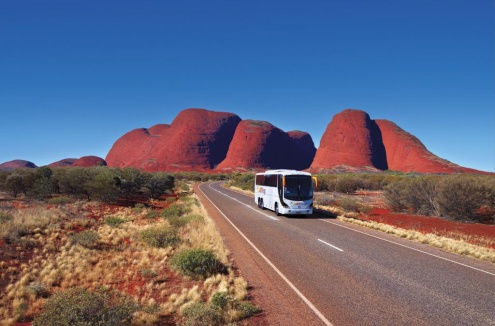
Travel through desert scenery to Alice Springs. Enjoy comprehensive commentary of your surrounds as you pass through the rugged outback. View majestic Atila (Mt. Conner) along the way. Stop at Mt. Ebenezer Road House where there is the opportunity to purchase afternoon tea (own expense). Travel North along the Stuart Highway before arriving at Alice Springs.
Alice Springs to Ayers Rock Transfer
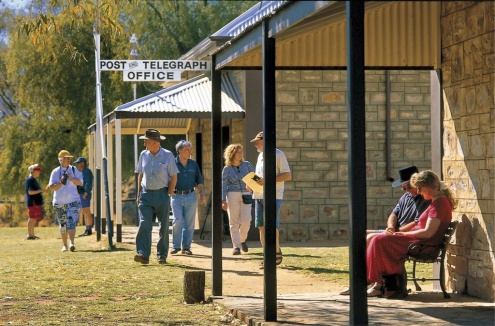
Depart Alice Springs through the West MacDonnell and James Ranges. Visit a camel farm where there’s time to take a short camel ride (own expense). Pause to view majestic Atila (Mt. Conner), a significant sacred site, often mistaken for Uluru, before arriving at Ayers Rock Resort.
Experience Uluru Reviews
karenpammy2016
MAGeorgeNYC
Experience Uluru
Direct Contact Info
Hours: 9am - 3pm Monday to Friday | 9am -12pm Weekends
Address:
TRAVSTAR PTY LTD
ABN: 21 095 692 925
PO Box 6918
Cairns
QLD 4870
Australia
Call Direct:

